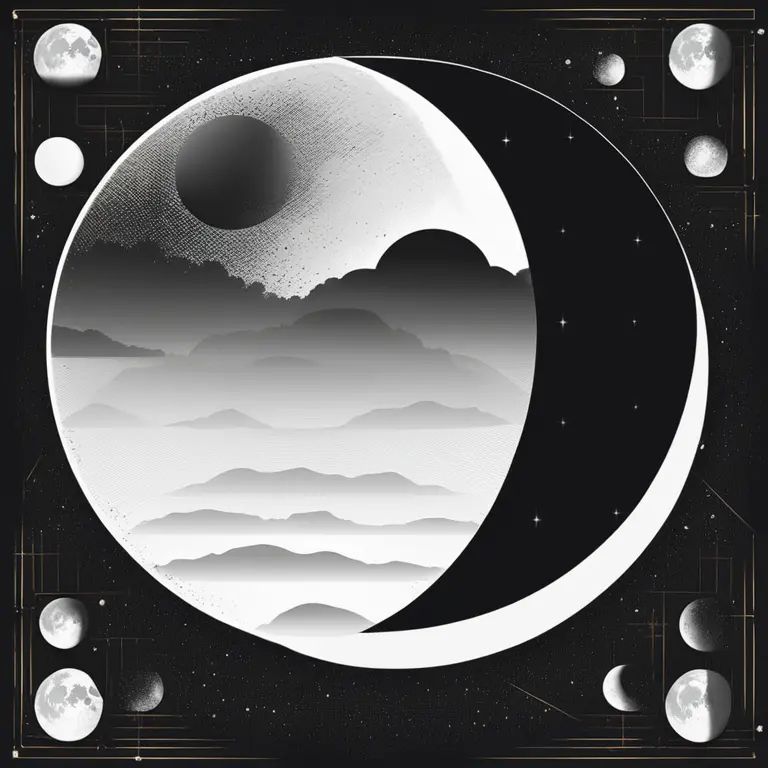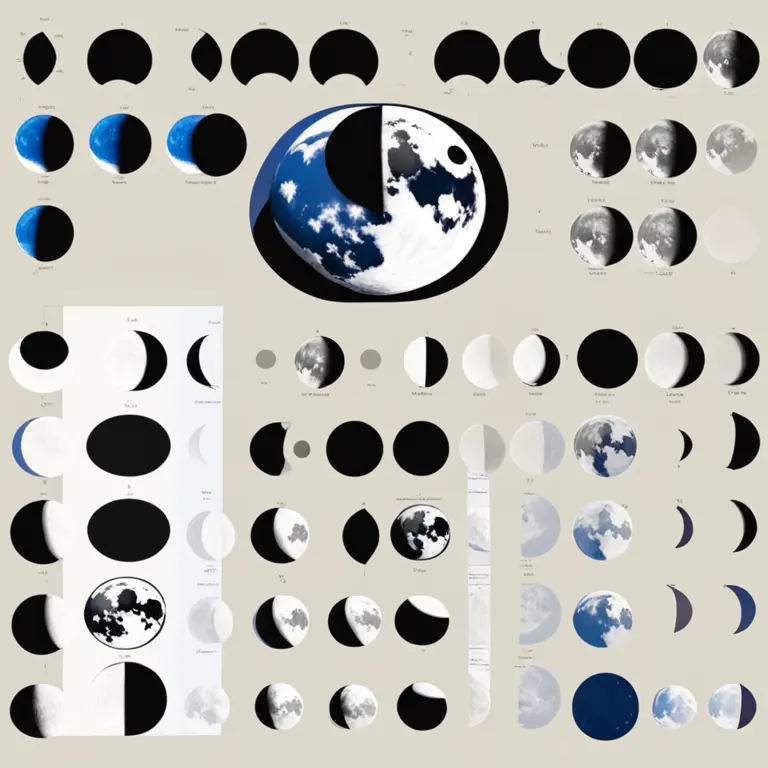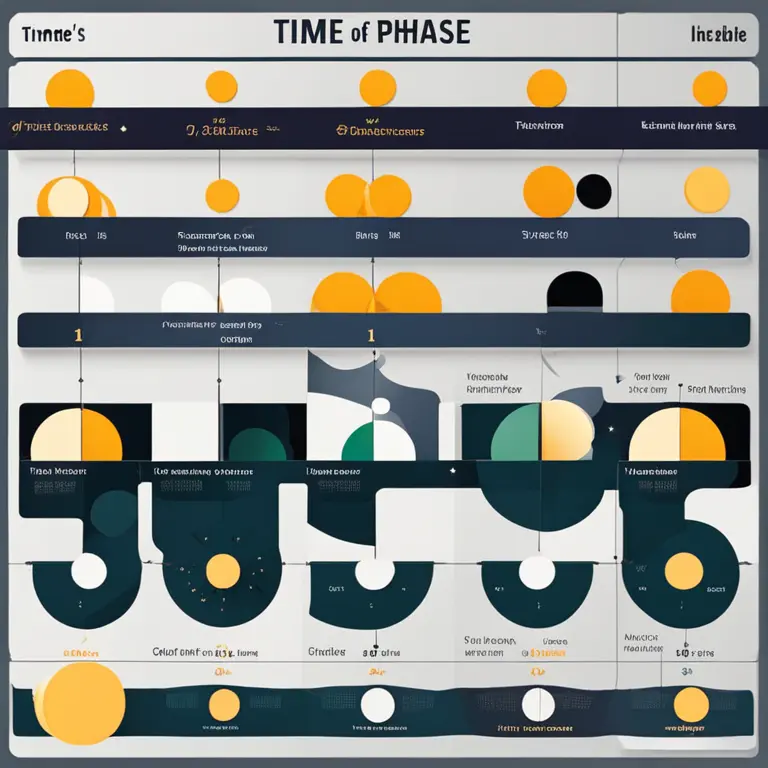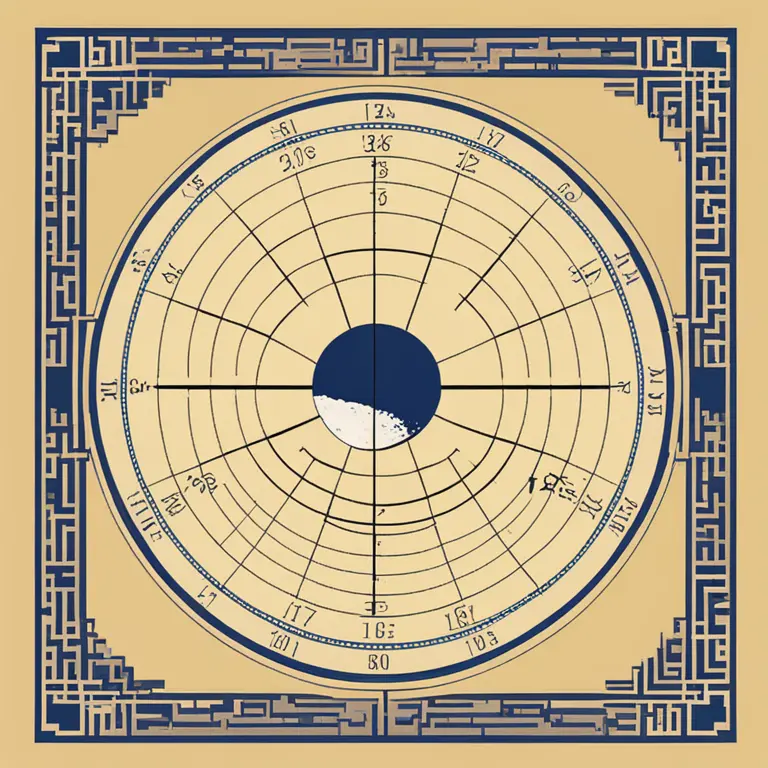
The Moon's Phases and Geographical Influence
Delve into how the moon’s phases can appear different depending on one's location and how this impacts the practice of astrology and divination.
article by Priya Deshmukh
The Phenomenon of the Moon's Phases
The Moon’s phases, a celestial spectacle, have intrigued humankind for millennia—its waxing and waning serving both as a timekeeper and an inspiration for myths and spirituality. A fundamental understanding of lunar phases is essential in many practices, including astrology, where the Moon's position can influence predictions and insights. The phases of the Moon arise from our terrestrial perspective, observing the illuminated portion of the Moon's surface as it orbits around the Earth. It's crucial to recognize that these phases, while universal, may exhibit slight differences in appearance from different geographical locations.

Varying Views from Different Latitudes
The visibility of the Moon’s phases can indeed vary by location, particularly when considering the observer's latitude. Viewers at different latitudes will see the Moon from diverse angles, influencing the appearance of its phases. For instance, those in the Northern Hemisphere will see the waxing crescent opening to the right, while observers in the Southern Hemisphere will see it opening to the left. The lunar cycle itself remains consistent globally, but the orientation of the crescent and gibbous phases flips when crossing the equator.

Timezone Influence on Lunar Observations
Timezones significantly impact when the Moon’s phases are visible. A full moon may occur during daylight hours in one part of the world and be prominently displayed at night in another. This dictates that the exact moment when a lunar phase is supposed to occur can manifest at varying local times, a critical factor for astrological practices that rely on precise timings, such as the casting of horoscopes and the practice of electional astrology known for selecting auspicious times for events based on celestial positions.

Zodiacal Position Affected by Longitude
While the phase of the Moon is not inherently altered by longitude, the Moon's zodiacal position as seen from Earth can differ. This variation can influence which house the Moon occupies in a natal chart or during transit, which in turn affects astrological interpretations and forecasts. In predictive astrology, which anticipates future trends and personality traits, the longitudinal perspective is essential to casting accurate and personalized charts, especially for determining moon-related factors such as moods, emotions, and instincts.

Seasonal Changes and the Lunar Display
Seasonal shifts also produce variations in the Moon's perceived size and illumination. The tilt of the Earth's axis means that, during particular times of the year, the Moon can ride high or low in the sky, altering its visibility and the intensity of its phases. In astrology, these seasonal variations play a role in the interpretation of celestial events, as the angle of the Moon’s rays can symbolically amplify or diminish the energies ascribed to different lunar phases.
The Personal Touch in Astrological Practices
For personalized astrological readings, including biorhythms and compatibility assessments, the incorporation of exact geographical coordinates enriches the precision and depth of the analysis. The Moon exerts a profound influence on individual astrological profiles, with its phases reflecting the cyclical nature of human experiences. Accounting for locational differences ensures that advice and insights remain relevant and tailored to the individual, whether they are seeking understanding through horoscopes, palmistry, or other esoteric studies.
Embracing the Moon’s Universal Rhythm
Despite the slight geographical nuances, the Moon's phases continue to follow a universal rhythm that unites us under a shared lunar dance. Astrology, among other metaphysical traditions, leverages these celestial patterns to offer wisdom and guidance. By understanding and respecting the intricacies brought forth by location, practitioners and enthusiasts alike can deepen their connection with the cosmos, using its rhythms to harmonize their lives with the natural world.
Published: 1/19/2024
Modified: 1/19/2024
More predictions
Come back here soon to learn more about yourself and your future


Moon Phases & How They Impact on Relationships
Discover how the lunar cycle might influence your romantic connections and emotional dynamics.


The Lunar Cycle: Phases of the Moon
Delve into the celestial mechanics behind the moon's phases and how they influence the rhythm of life on Earth.


The Lunar Cycle's Role in Our Life
Discover how the moon's phases can impact personal rhythms, horoscopes, and insights into life's mysteries in this enlightening article.